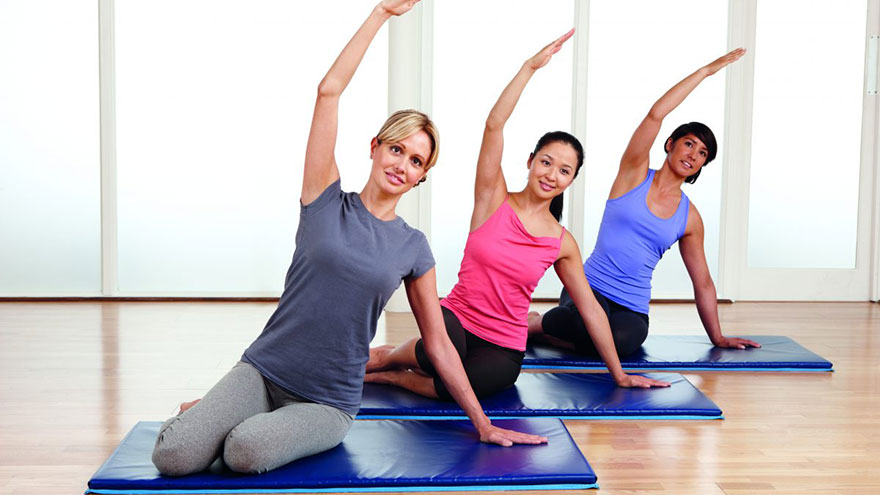The Styles of Pilates Classes
Stepping into the world of Pilates, you’ll find no shortage of different classes to take. The style of each class ultimately boils down to the type of Pilates it teaches. In virtually any case, however, Pilates offers an intensive, full-body workout that helps strengthen your core and improve your posture, flexibility and spinal alignment. In addition to style, each class varies a bit in basic features such as price point and group size.

Classical Pilates
The namesake of the exercise, Joseph Pilates, created this system in the 1940s to help the rehabilitation efforts of World War II veterans. Classes that stick closely to Pilates’s original methods offer what is commonly known as classical Pilates. These classes often present each exercise in a standardized order and focus on exercising the lumbar spine with a “posterior tilt,” meaning that the exerciser presses her spine into the floor during lying exercises. This style of Pilates is sometimes called authentic, New York or Romana Pilates.
Contemporary Pilates
Contemporary or modern Pilates classes typically mix up the exercise order and incorporate current exercise research from fields such as biomechanics and physical therapy into their Pilates practice. Unlike the “posterior tilt” of classical Pilates, classes that teach the contemporary Pilates style encourage a “neutral pelvis,” which puts a little space between the exercisers spine and the ground during lying exercises. In general, you’ll find a greater variety of classes in the contemporary style than in the classical style.
Mat Work
While almost any class features some mat work, classes that focus squarely on mat work are also prominent in the Pilates world. During a mat work class, you’ll spend much of your time on the ground lying on a mat. This style relies on creating resistance via body weight and gravity rather than external equipment. Mat work can be done at home via online classes or exercise videos, but when done in the class environment, it is usually a large group program.
Other Styles
Some Pilates classes, both classic and contemporary, incorporate weights or other exercise equipment. Most prominently, these classes — especially of the classical sort — feature specialized pulley machines known as reformers, which are specifically designed to create resistance during Pilates exercise. Other Pilates classes, usually contemporary styles, incorporate equipment ranging from foam rollers to exercise balls. Specialized clinical Pilates, used for rehabilitation purposes, usually focuses on strengthening stabilizer muscles and relieving lower back pain. This type of Pilates generally entails small-scale instruction, with groups of about one to four people.
You Might Also Like :: Pedaling Exercises for Hill Climbing

